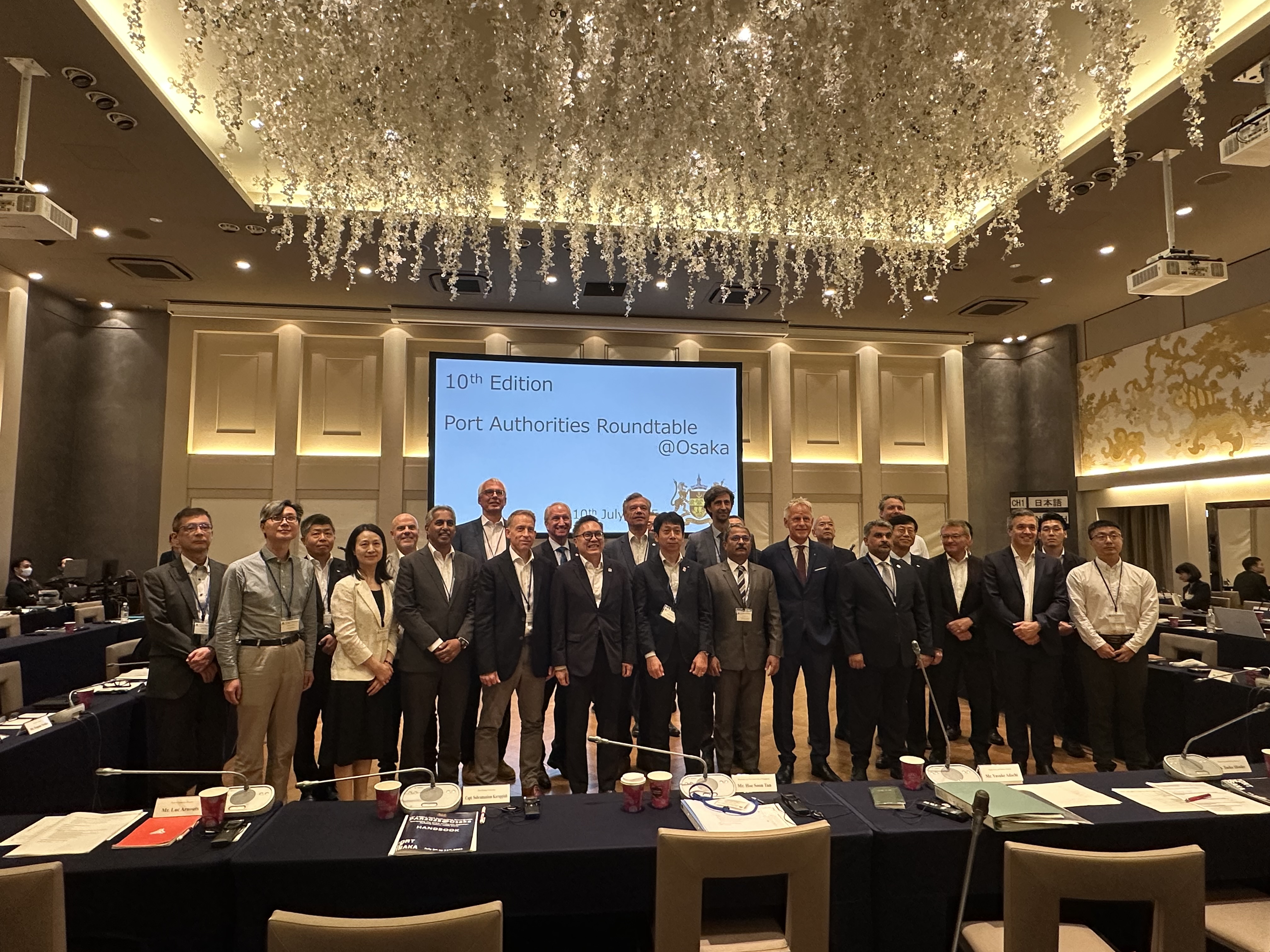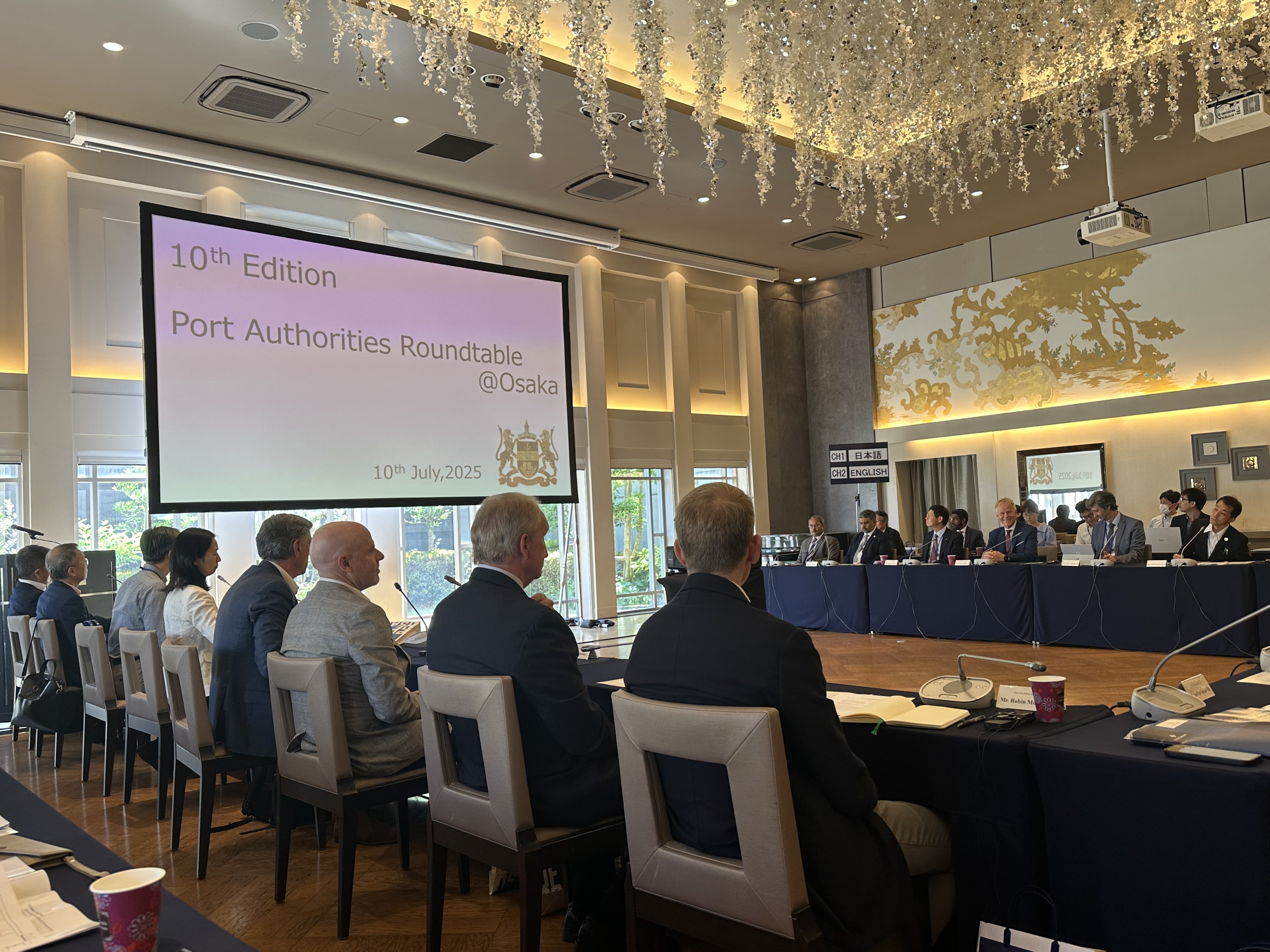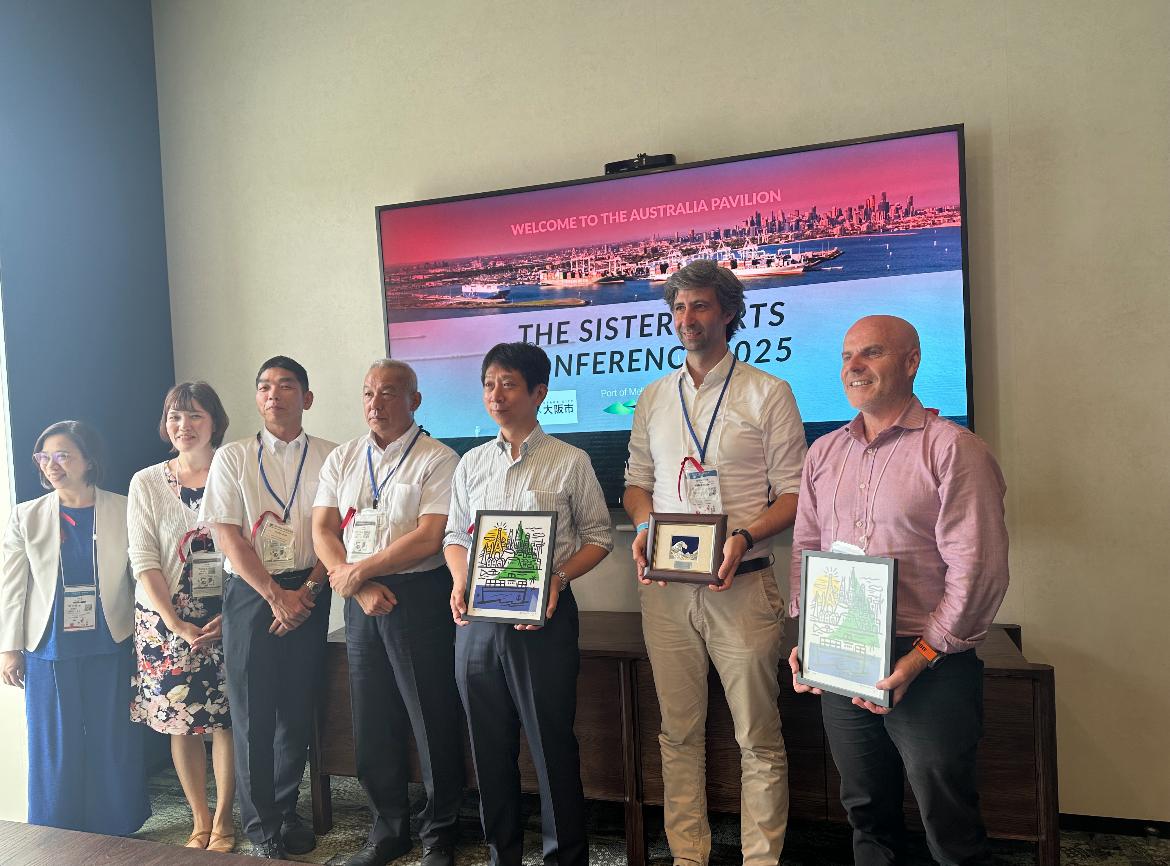14 July 2025 – Last week, port representatives from around the world gathered at the 10th Port Authorities Roundtable in Osaka, Japan, themed “Navigating the VUCA (Volatility, Uncertainty, Complexity, and Ambiguity) landscape together: building future-ready ports”.

Across three days, port executives discussed decarbonisation, digital transformation and innovation, and the challenges posed by uncertain external factors.
Port of Melbourne Executive General Manager, Commercial, Shaun Mooney spoke about adapting to larger vessels, capacity expansion, enhancing supply chains, strengthening inland transport, and hinterland development.
“External factors, such as the increasing size of vessels, capacity constraints, and landside connectivity, bring unique challenges to the operating environment. To adapt to these changes and keep trade moving at Port of Melbourne, we have invested more than $810 million over the last eight years in major projects such as the Swanson Dock West Remediation Project, which will extend the design life of the asset and accommodate for larger ships,” said Mr Mooney.

He added, “As for the current geopolitical landscape, we continue to monitor trade shifts. So far, Port of Melbourne has had limited direct exposure to US tariffs, as the US makes up only around 6% of our total full container exports.
“Additionally, we expect that Australian exports will continue to be in strong demand, both in the US and in alternative markets around the world.”
Japan: Port of Melbourne’s third-largest container export destination
Japan is a critical trade partner for Port of Melbourne, standing as the Port’s third-largest container export destination and 11th-largest container import partner.
According to Port of Melbourne’s 2024 full-year data, Japan accounted for 7% (46,000 Twenty-foot Equivalent Units) of container exports from the Port, up 19.2% on the year prior. In 2024, imports from Japan where the highest ever recorded, comprising 2% (28,000 TEU) of containers arriving at the Port – a 15% increase from 2023.
Major exports to Japan include agricultural products – such as hay, chaff, fodder, meats, butter, and cheese – while container imports from Japan mainly feature new cars and vehicle-related goods.
Beyond container trade, Japan remains the Port’s most important partner for motor vehicle trade, accounting for 29% of roll-on/roll-off (RoRo) motor vehicle imports.
Sister Ports Conference at the Australian Pavilion, Expo 2025
On Friday, 11 July, Port of Melbourne convened with Port of Osaka and HAROPA Port for the Sister Ports Conference, hosted at the Australia Pavilion at Expo 2025. Bringing together more than 150 countries, Expo 2025 provided an excellent opportunity to strengthen our global port partnerships.

“Sister port partnerships are incredibly valuable to Port of Melbourne. They strengthen international trade and economic prosperity, encourage bilateral investment, and promote expertise sharing, particularly around port planning and development, sustainability, and technology,” said Sarah Browne, Executive General Manager, Corporate Relations.
Among Port of Melbourne’s global port partnerships is its sister-port relationship with Port of Osaka, which began nearly 51 years ago, on 9 October 1974. Port of Melbourne also fosters global port partnerships with Port of Yokohama, Port of Oakland, Tianjin Port, and Shanghai Port.
“It was particularly special to be able to host the Sister Ports Conference at the Australia Pavilion,” Ms Browne said.
For more information contact:
Nicole Ng
Mobile: 0427 700 844
Email: nicole.ng@portofmelbourne.com
